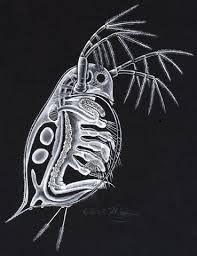Now that your fish are producing waste... (uneaten food, dead fish, poop) the nitrogen cycle is at work converting that waste into safe and beneficial bacteria colonies. The nitrogen cycle is the biological process that converts ammonia and nitrate (which are toxic to fish) into relatively harmless nitrogen compounds- nitrates.
We add a weekly dose of biological enhancer (MicrobeLift Special Blend) to help build these beneficial bacteria colonies form in our coldwater ecosystem.
Nitrogen Cycle Simple Summary
Waste → Ammonia (toxic) → Nitrite (toxic) → Nitrate (okay)
(If we had plants in aquarium, they would absorb these nitrates and use them as nutrients, completing the cycle. Since we don't, we need to do partial water changes regularly.)
Understanding your Aquarium Nitrogen Cycle
The nitrogen cycle seems complicated to understand, but there is a great video by the Aquarium Co-op that explains the cycle using M&M's to represent ammonia, nitrite and nitrate, which really helps wrap your mind around the process! Check it out with your classroom.
How do I Interpret the Water Test Results?
You will find a Water Testing Instruction Guide in the box all the chemicals arrive in. This guide walks you through how to test for each chemical, what the test result means, what the recommended levels are, and what to do if you have a spike in a given chemical. Super helpful for troubleshooting! And here we even have a simplified version your students might find easier to read.
What to Expect?
Once your trout begin to produce waste, it is natural to see a slight rise in ammonia levels. You will know that the beneficial bacteria are becoming established when nitrate levels also begin to rise and ammonia levels have a corresponding decrease. The bacteria are turning ammonia to nitrite (nitrifying) and then nitrite to nitrate (denitrifying) the waste.
Overview of Aquarium Cycling Stages:
Stage 1: When trout begin to produce waste (fry stage), ammonia levels may increase, and you may see some trout death due to the ammonia level spike. This is the stage when MicrobeLift Special Blend bacteria supplement will begin being added.
Stage 2: Ammonia levels should begin to decrease, and nitrite levels will begin to increase. Nitrite may remain high for a couple of weeks. This stage you may see more of a trout "die off."
Stage 3: Nitrite levels will begin to decrease and NitrAte levels will increase. There will be very few trout deaths, if any, at this point as the toxic Nitrites have been converted to less toxic NitrAtes. The aquarium water is considered to be "cycled" at this point.
Recommended Water Testing Levels:
- Ammonia- Less than 1 mg/l (ppm).
- Nitrite- Near zero (ppm), once bacteria are established in the filter system
- Nitrate- Below 40 ppm (mg/l)
- pH- The pH scale runs from 1 (acid) to 14 (basic). 7 is “neutral”. A pH of 7.4 – 8.4 is fine for our trout
Ammonia and Nitrite at high levels are toxic to your fish. Nitrate is not, it would take up to 200 ppm for nitrate to be toxic.
What To Do if Levels are Consistently High (Over Extended Testing):
- If ammonia or nitrite levels rise above 1 ppm for an extended period, contact us. Reducing or temporarily pausing your feeding schedule is a good first step that you can take right away. Depending on the conditions in your aquarium, additional filter media or aquarium cleaning/gravel vacuuming can also quickly reduce these waste products.
- Nitrate levels will steadily rise during the year. Without the presence of plants in our aquarium, the nitrogen cycle is incomplete, and there is no place for nitrate to go. This is not a threat to your trout, but high levels will encourage algae growth, odor, etc. The only way to reduce nitrate is with partial water changes.
We also have unlimited resources for troubleshooting efforts on the Finger Lakes Trout in the Classroom Blog under "Tech Support." Explore all there is to learn about trout and water care with your classroom this year! And as always, reach out if you need support!











.gif)












